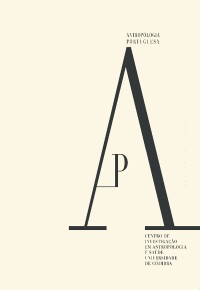Please use this identifier to cite or link to this item:
https://hdl.handle.net/10316.2/47732| Title: | A Necrópole de Alapraia: o local do sono eterno de uma população humana: o que os restos ósseos humanos nos revelam sobre ela… | Other Titles: | The Necropolis of Alapraia: the place of the eternal sleep of a human population: what the human skeletal remains tell us about them… | Authors: | Silva, Ana Maria | Keywords: | Necrópole de Alapraia;Neolítico final;espólio ósseo humano;gruta artificial II;Calcaneum secundarium;cúspide de talon;patologia traumática;Necropolis of Alapraia;Late Neolithic;human bones;artificial cave II;Calcaneum secundarium;talon cusp;traumatic lesions | Issue Date: | 2019 | Publisher: | Imprensa da Universidade de Coimbra | Abstract: | The Alapraia Necropolis (Cascais),
dating from the Late Neolithic, includes four
artificial caves excavated between the years
of 1889 and 1943. Human bone remains were
recovered from caves II, III and IV. This collection
was deposited in the Museu Condes
de Castro Guimarães, in Cascais, without
ever having been studied in detail. Recently,
more human bone remains from Cave II were
found in the Anthropological Museum of the
University of Coimbra and in the Museum of
Geological Services (Lisbon), which prompt
the study of all human bones recovered from
said Necropolis. The majority of the human
remains were recovered from cave II: at least
49 individuals of both sexes, of whom 22 died before the age of 15. The more relevant
morphological data includes the presence of
a supernumerary foot bone, calcaneum secundarium
(2/8), and an accessory cusp on a
left superior lateral incisor (talus cusp), which
is the oldest documented case in the Portuguese
territory to the date. Among the pathologies,
traumatic lesions stand out, namely:
a depressed fracture in an adolescent’s
skull, signs of fracture in the diaphysis of a
5th left metacarpal, 4th metatarsal, distal foot
phalanx and thoracic block vertebrae. All the
lesions are remodelled. The research in ancient
documentation proved to be extremely
useful for reconstituting the course of these
human remains between several institutions. A Necrópole de Alapraia (Cascais), datada do Neolítico final, é constituída por quatro grutas artificiais escavadas entre os anos de 1889 e 1943. Restos ósseos humanos foram recuperados das grutas II, III e IV. Este espólio acabou por ficar esquecido e depositado no Museu Condes de Castro Guimarães, em Cascais, sem nunca ter sido estudado de modo aprofundado. Nos finais da década de 2000, foram localizados restos ósseos humanos da gruta II no antigo Museu Antropológico da Universidade de Coimbra e no Museu dos Serviços Geológicos, em Lisboa, o que levou ao estudo de todo o espólio ósseo humano recuperado da referida Necrópole. A maioria do espólio ósseo humano provém da gruta II. Nesta, foram depositados no mínimo 49 indivíduos, de ambos os sexos, dos quais 22 faleceram com menos de 15 anos. Destaca-se a presença de um osso supranumerário do pé, o calcaneum secundarium (2/8), e de uma cúspide acessória num incisivo lateral superior esquerdo (cúspide de talon), constituindo esta última o caso mais antigo documentado para o atual território português. Entre as patologias observadas, evidenciam-se as lesões traumáticas, todas remodeladas. Estas incluem uma fratura por depressão num crânio de um indivíduo adolescente, nas diáfises de um 5.º metacarpiano esquerdo, 4.º metatarsiano, falange distal do pé, além de um bloco (anquilose) de duas vértebras torácicas de adultos. De salientar ainda a pesquisa em documentação antiga que se revelou extremamente útil para reconstituir o percurso deste espólio ósseo antigo entre diversas instituições. |
URI: | https://hdl.handle.net/10316.2/47732 | ISSN: | 0870-0990 2182-7982 (PDF) |
DOI: | 10.14195/2182-7982_36_6 | Rights: | open access |
| Appears in Collections: | Antropologia Portuguesa |
Files in This Item:
| File | Description | Size | Format | |
|---|---|---|---|---|
| a_necropole_de_alapraia.pdf | 2.24 MB | Adobe PDF |  |
Items in DSpace are protected by copyright, with all rights reserved, unless otherwise indicated.
